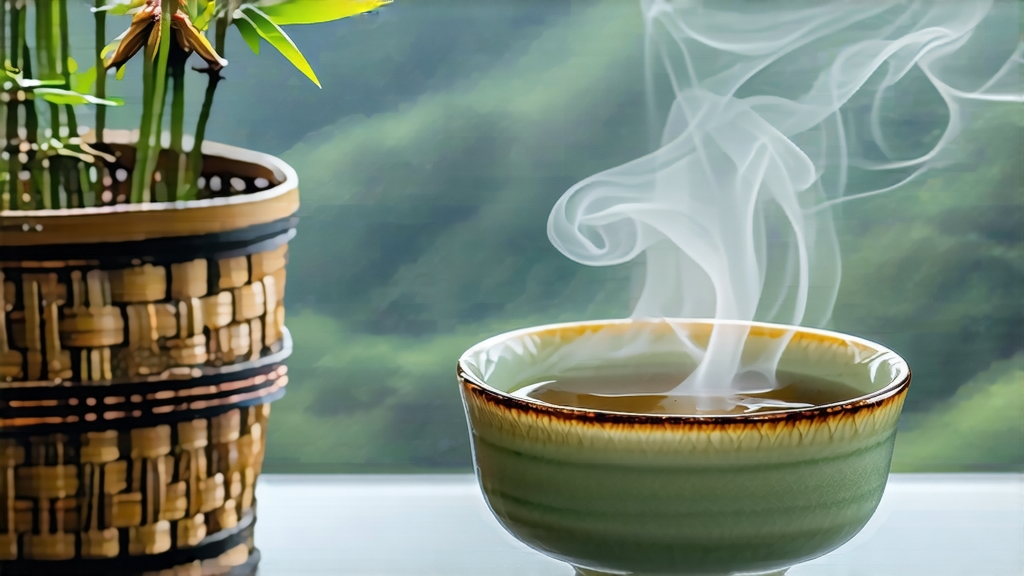
Tucked high on the mist-laced shoulders of Mt. Meng in Sichuan Province, Meng Ding Huang Ya has been quietly refining its golden character for more than twelve centuries. To most Western drinkers “yellow tea” is still a rumor, a color caught somewhere between green freshness and black depth; yet in the imperial tribute records of the Tang dynasty (618-907 CE) this particular yellow bud already carried the highest rank, delivered to the palace in small lacquer boxes sealed with beeswax and camphor leaves. Today the same narrow valleys—where clouds sink nightly into the forest, re-hydrating the tea bushes—continue to yield a leaf so delicate that a single kilo contains more than eighty thousand down-covered tips. Understanding Meng Ding Huang Ya is therefore not simply a lesson in processing; it is an invitation to taste the weather, geology and monastic patience of a corner of China that once supplied the emperor’s own cup.
History and legend intertwine at 1 450 m above sea level. Buddhist monks from the nearby Meng Ding temple began cultivating tea in the early eighth century, partly to stay awake during marathon sutra recitations and partly because the mountain’s perennial fog discouraged rice but favored the slow, tender growth of the local small-leaf cultivar. A frequently cited story claims that when the Tang princess Ankang was cured of a lingering fever by an infusion of these buds, the emperor declared the entire annual harvest imperial property. Whether myth or medical miracle, the decree cemented Meng Ding Huang Ya’s reputation; Song-era poet Lu You praised its “nectar that hovers between green jade and topaz,” while Ming bureaucrats measured out allocations by the gram, fearful that over-picking would exhaust the bushes. By the late nineteenth century the tea had all but vanished from market lists, its painstaking craft eclipsed by faster green teas demanded by European traders. Only in the 1970s did Sichuan agronomists re-assemble the oral instructions of four surviving tea masters, resurrecting a process that UNESCO now lists as intangible cultural heritage.
Strictly speaking, Meng Ding Huang Ya is not a single cultivar but a bud-grade standard applied to the first 1.5 inches of spring growth from four clonal shrubs—Mengding #9, #16, #23 and the ancient seed-grown “xiao ye zhong” (small-leaf native). Picking begins when the dawn mist still beads on the bud’s two protective carpels, usually between March 20 and April 5 when night temperatures oscillate between 8 °C and 14 °C. Experienced pickers use a diagonal snap that leaves the tiny “fish-tail” stipule attached; this seemingly minor detail later helps the tea master judge the exact moment when enzymatic oxidation must be arrested. Because the mountain enjoys only four hours of direct sunlight in early spring, the leaf chemistry is dominated by theanine rather than catechins, giving the finished tea its hallmark brothy sweetness.
The craft that turns a green bud into a yellow one is called “sealed yellowing” (men huang), a slow dance between moisture, heat and time that can last up to 96 hours. Within minutes of plucking the shoots are spread on bamboo trays inside a cave-like room where humidity hovers at 78 %. Here they wither for 70 minutes, losing roughly 8 % of their water weight while developing a faint cucumber note. Next comes a very light “kill-green” (sha qing): the leaves are hand-tossed in woks heated to precisely 160 °C for 90 seconds, just long enough to rupture the outer cell walls without fixing the green color. While green-tea makers immediately cool the leaf, the yellow-tea master piles the still-warm buds 6 cm deep inside a linen-lined cedar box. Covered by another layer of cloth and a wooden lid, the tea enters its first men huang phase at 34 °C and 75 % humidity. Every 45 minutes the pile is gently turned, allowing the internal temperature to rise one degree before being equalized. Over the next eight hours the leaf edges turn primrose, amino acids convert into aromatic pyrazines, and a whisper of non-enzymatic oxidation stains the bud tip antique gold. The process is repeated twice more with gradually lower temperatures, each cycle deepening the color while softening grassy tannins. Finally the buds are given a curious 20-minute charcoal bake at only